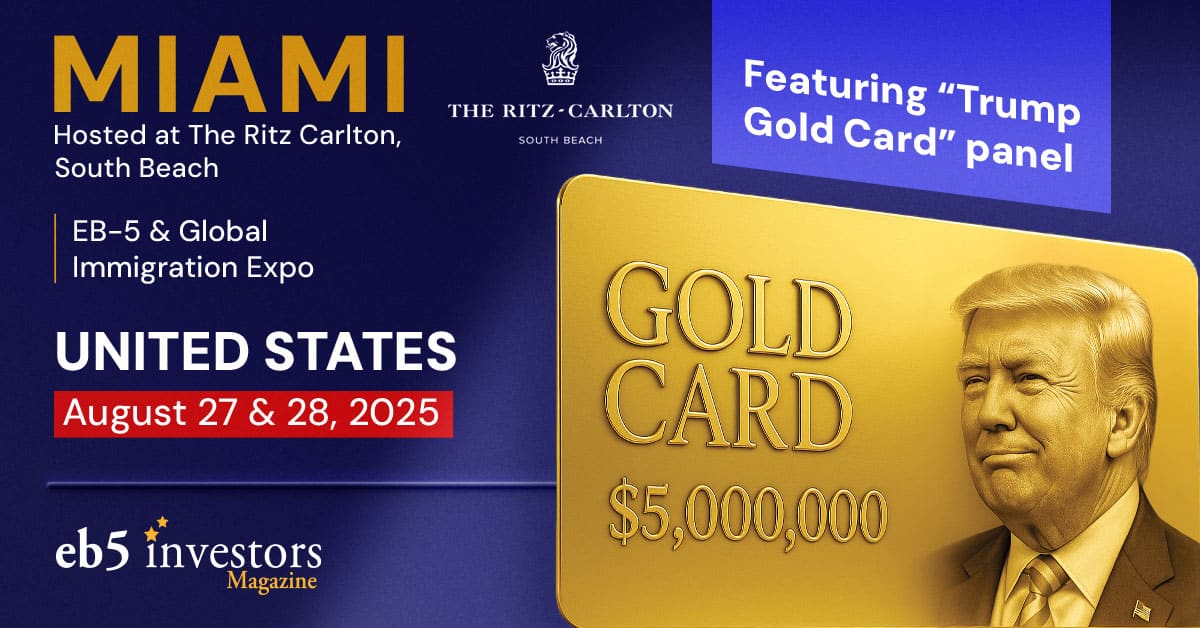
By Marta Lillo
Foreign nationals studying in the U.S. under an F-1 visa who wish to remain in the country can apply for a green card through the EB-5 investor visa program.
EB-5 attorneys believe this route is the most useful, as these investors can begin their process in the U.S. directly while still studying.
“If the goal of a student is to remain in the U.S. as a permanent resident, the most efficient route is to proceed with EB-5,” says Steffanie Lewis, senior immigration attorney at The International Business Law Firm PC (IBLF).
Before the EB-5 Reform and Integrity Act (RIA) was passed in 2022, this immigration route was inexistent as students could only apply for optional practical training (OPT) for 12 months; two years in the case of STEM students. If they applied for EB-5, they had to wait for their I-526 petition to be approved first get a green card to work.
The new law opened a new venue for F-1 students and other student visa options, adding the concurrent filing option so they can file to obtain permanent residency while being able to work and travel to and from the U.S.
“RIA was a game-changer,” says Marko Issever, chief executive officer of America EB5 Visa, LLC.
Meanwhile, Rohit Kapuria, partner and vice chair of the global immigration and foreign investment practice at Saul Ewing Arnstein & Lehr, LLP, explains that obtaining temporary work and travel authorization while waiting on their concurrent filing approval is a key driver behind these F-1 student petitions. “The whole point of doing a concurrent filing is to have the flexibility to be able to secure employment post-completion of studies.”
Concurrent filing facilitates F-1 student applications for EB-5
Current valid F-1 students can file four applications at the same time: form I-526, which is the actual EB-5 visa application; an I-485 for adjustment of status to obtain permanent resident application; I-131 for travel authorization or advance parole travel document and form I-765 to apply for employment authorization.
As a former international student, Issever is adamant about the benefits of applying for EB-5 after F-1 visa holders complete their degrees. “I know firsthand how it feels to be qualified for a job but not be considered simply because of not having a work permit or a green card. I say to parents of international students who carry a tremendous financial burden of paying for their children’s tuition, room, and board for four years, which could easily total $300-350,000, the EB-5 is the best gift they can give their children. Once their children have a work permit, they can compete in the job market on an equal footing with other job applicants with work permits who would have otherwise been at an advantage against them.”
Issever also highlights that by concurrent filing for EB-5 and work and travel permits, F-1 students do not need employer sponsorship and can work anywhere in the U.S., including self-employment. Also, EB-5 adjudications are processed faster for rural project applications, which is advantageous for students from China and India, countries with EB-5 processing backlogs.
According to Kapuria, this U.S. investor visa has also become a preferred option over other employment-based options. “EB-5 has become a very attractive process, particularly for these two demand countries [China and India], because the demand on the other visa categories, which are the EB-1, EB-2, and EB-3, require certain educational qualifications overextended by demand.”
F-1 applications for EB-5 are “a family matter”
Kapuria adds that F-1 students who mainly apply for EB-5 are undergraduates halfway through their studies and close to graduation. “Pretty much all of them get a gift from their family, usually their parents. The parents are the ones who are funding the education and assisting them in the process of getting them set up. They are generally accredited by virtue of the wealth that their parents have gifted them over time. Either parents are directly the ones who have learned about the [EB-5] program, or the students have learned from other friends, and then they ask their parents, and they in turn explore it together. But it’s generally a family affair.”
The EB-5 attorney adds Master’s and PhD students also apply for this visa, but usually after they’ve explored other options and realized the opportunities are limited.
According to Kapuria, normally, the parents provide the documentation to credit a legal source of funding to begin the process and usually opt for the Regional Center investor route. “The majority of the EB-5 applicants, I would say 95% plus, particularly after the advent of the new law, are doing it. The direct route is very good, but unless you’re working directly with a close family relative or they’re able to go through the process directly, it’s not that common. The regional center makes the process a lot more streamlined.”
And like any EB-5 investor, these applicants face the same challenges and risks of meeting the program’s requirements. “Only certain individuals will be able to qualify. But insofar as they are able to remain in the U.S., they are they’re gifted, they’re able to adjust their status. Then they have more opportunities for work and travel when they avail themselves of this.”
However, immigration attorneys caution students and families assessing applying for the EB-5 visa to decide when choosing projects and raising the capital carefully.
“Compliance with the rules is critical,” Kapuria says. “They have to be very careful because EB-5 is a security. It’s a general security that has been offered to these to these students. And if a sale or if an offer to make a sale is made here in the United States, issuers must comply with securities law.”
Lewis concludes: “Should the investment fail to create 10 full-time positions, you lose your Permanent Resident eligibility. Also, failing eligibility on either of the two forms that are filed, is a downside. Should the student choose to pursue the EB-5 process efficiently, and minimize the down sides, he or she should engage a knowledgeable licensed broker and a good EB-5 attorney.”
DISCLAIMER: The views expressed in this article are solely the views of the author and do not necessarily represent the views of the publisher, its employees. or its affiliates. The information found on this website is intended to be general information; it is not legal or financial advice. Specific legal or financial advice can only be given by a licensed professional with full knowledge of all the facts and circumstances of your particular situation. You should seek consultation with legal, immigration, and financial experts prior to participating in the EB-5 program Posting a question on this website does not create an attorney-client relationship. All questions you post will be available to the public; do not include confidential information in your question.








